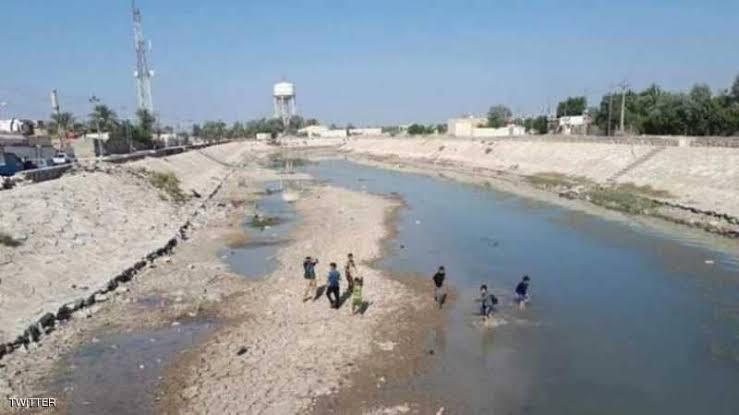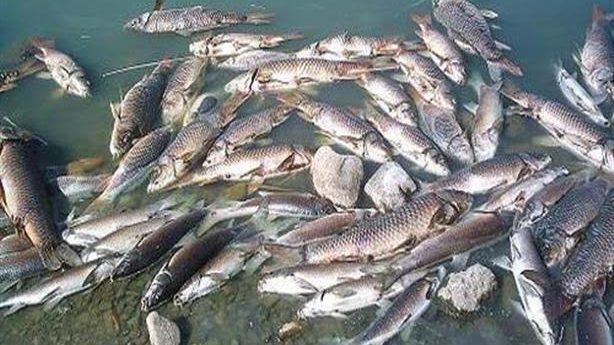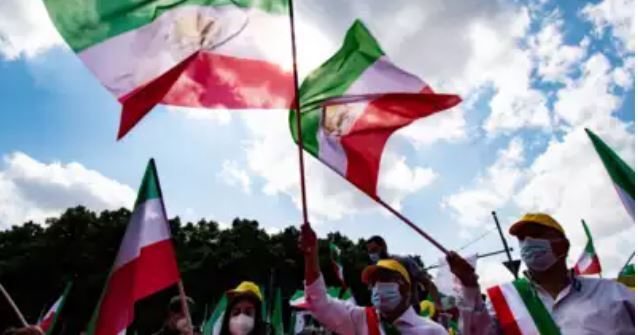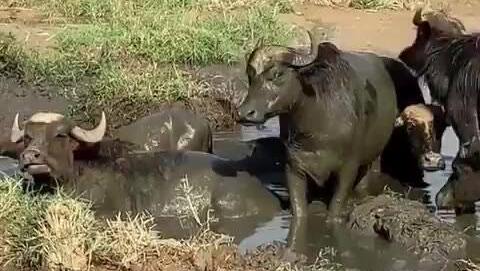Getting your Trinity Audio player ready...
Protests have been raging on the streets of Khuzestan, an Iranian province in the country’s southwest, which is home to most of Iran’s Arab Ahwaz minority and has seen many waves of demonstrations in the past.
The protests erupted on July 15 in response to a severe water shortage causing suffering for the province’s residents. Since then, demonstrations have spread outside the region and, on Monday, people reportedly marched in the streets of the capital Tehran.
4 View gallery


The dried-up Karkheh River in the Khuzestan province in southwest Iran
(Photo: Courtesy of Hamid Mtasher)
Abdulrahman al-Heidari, spokesperson for the Patriotic Arab Democratic Movement in Ahwaz, an opposition party, is based in the United Kingdom but keeps in close and constant touch with people in Khuzestan province (whose name he corrects to the Arabic “al-Ahwaz”).
People began to protest because they did not have enough water to drink, or to give to their livestock, he says, but “water was just a trigger… Ahwazi people have been suffering from the Iranian policy for a long time, for longer than nine decades.”
Heidari explains that decades of diverting water from Khuzestan has impacted its rivers and shrunk its marshlands, which fed thousands of people. This forced farmers to forsake their villages, where they could no longer sustain themselves, and migrate to the cities.
“At present, the al-Ahwaz region is completely dried up and there is not enough water for drinking even, not to mention the death of thousands of livestock animals, birds and fish, and the draining of the Karkheh River which led to the drying up of the [UNESCO world heritage site] Hawizeh marshes,” says Hamid Mtasher, founder of the Al-Ahwaz Liberal Party.
“Today, our people depend on bottled water and many villages have become empty of residents due to drought and migration to the city.”
Mtasher says his information is based on constant communication with sources inside the region and prefers that his location remain unpublished.
4 View gallery


Dead fish in what is left of the Hawizeh Marshes in the Khuzestan province in southwest Iran
(Photo: Courtesy of Hamid Mtasher)
Iranian authorities responded to the protests with a heavy hand. Live ammunition was used in efforts to quell the protests, Amnesty International confirmed last week.
“Iran’s security forces have deployed unlawful force, including by firing live ammunition and birdshot, to crush mostly peaceful protests taking place across the southern province of Khuzestan,” the organization’s statement read. At the time, Amnesty confirmed that at least eight demonstrators and bystanders had been killed.
Faisal Maramazi, executive director of the opposition Ahwazi Centre for Human Rights, based in the UK, says that “so far we have more than 1,500 arrests, we have more than 150 injured and … more than 14 people dead so far.”
Maramazi describes mass arrests of Ahwazi Arabs as government forces move “family by family, house by house.”
These repressive actions, he says, have caused a relative slowing down of the protests.
“We are asking the international community to take action, to take urgent action to support the innocent people, they need to be supported. If we leave them there, ignored, they will be killed,” Heidari says.
The UN High Commissioner for Human Rights Michelle Bachelet called on Tehran to solve the water crisis, instead of “using excessive force and widespread arrests to crush the protests about the situation.”
The Iranian Foreign Ministry hit back at her comments, calling them "totally invalid and tainted with false accusations and incorrect information."
4 View gallery


Iranians protest in Khuzestan over water shortages in the region, July 2021
(Photo: AFP)
The Islamic Republic’s state media claimed that only four people were killed in the protests, one a police officer, when it reported on the events in Khuzestan. However, the report blamed agitators for shooting into the crowd and at security forces.
Both Maramazi and Heidari say that Ahwazi Arabs see the water crisis as a result of an intentional policy of Tehran intended to bring about the displacement of the Arab minority.
“Ahwazis believe that this water crisis in al-Ahwaz is intentional, to change the demographic in al-Ahwaz, to forcibly migrate [the] Ahwazi people from Khuzestan and other provinces in Iran to other Iranian central cities,” Maramazi says.
A long list of grievances, which include displacement, government-generated poverty and unemployment, have led the Ahwazis to rise up, say the activists, and the dire water shortage was just the last straw.
Ultimately, says Maramazi, “Ahwazis, they don’t see themselves as Iranian, they want their self-determination, and they want their independence from Iran.”
This is echoed by Mtasher, who says that the protests are – among other goals – intended to send a message to Iran to “leave our lands and let us live in peace.”
However, Dr. Raz Zimmt, an Iran expert at the Institute for National Security Studies at Tel Aviv University, believes that ethnic divides are far from central to the protests.
“These protests have the water shortage very clearly as their background,” Zimmt says.
However, he adds, “Khuzestan is a province with a lot of issues apart from water, [problems] of poverty and economic deprivation, of unemployment and sandstorms, problems with the electrical supply, so it is clear that you can’t say that they took to the streets only because of the water shortage, even if that was the catalyst that drew them out.”
Zimmt says that Iran in its entirety is suffering from issues with the water supply, but that Khuzestan is a special case, for a few reasons.
First, he says, this is "the hottest area in Iran, and the one most prone to droughts” and secondly there is overall poor management of water and agriculture in Iran.
“For example, over-damming. Many dams were built over the years, and this leads to ecological damage and a [water] shortage,” he says.
4 View gallery


Farmers in the Khuzestan province in southwest Iran cannot find enough water to keep their livestock alive
(Photo: Courtesy of Hamid Mtasher)
In addition, Khuzestan is a region rich with oil, and Zimmt says that the oil industry is an especially water-thirsty enterprise. All have combined to deny the residents of Khuzestan, or al-Ahwaz, a stable supply of water.
Zimmt doesn’t deny that minorities in Iran – including the Ahwazi Arabs – suffer from discrimination but suggests that this has a lot to do with their geographical placement, on the country’s periphery.
However, this does not mean that separatist movements among Iran’s minorities reign supreme. Activists for Ahwazi independence may be using the current crisis to further their position, but they do not reflect aspirations on the ground, Zimmt says.
Heidari agrees that much of the chanting in the protests revolves around water. However, he points to calls in Arabic in which demonstrators express their will to sacrifice their lives for the sake of al-Ahwaz. This indicates aspirations more significant than solving the water crisis, he suggests.
There has been much talk in recent years of the Islamic regime in Iran and its survival. Months of negotiations regarding a return to the Iran nuclear deal have failed to bring relief from crippling sanctions imposed on the Iranian economy.
Zimmt, however, stresses that the protests “most certainly do not pose a threat,” at their current scale.
“These are relatively minor demonstrations … the regime will have no issues dealing with them,” he says.
Yet, the uprising throughout the country is an indication of a deeper trouble brewing under the surface, which may yet pose a danger to the regime. Demonstrations have rocked Iran every few years recently and, Zimmt says, “without a doubt, these are protest waves fed by unmet needs, either economic, or relating to infrastructure issues.”
The regime in Tehran doesn’t have a way to resolve these issues, he says, “because they require a lot of resources, which they don’t have at present, and they require reforms.”
With these issues currently unresolvable, protests can be expected to occur again and again, with indeterminate results.

